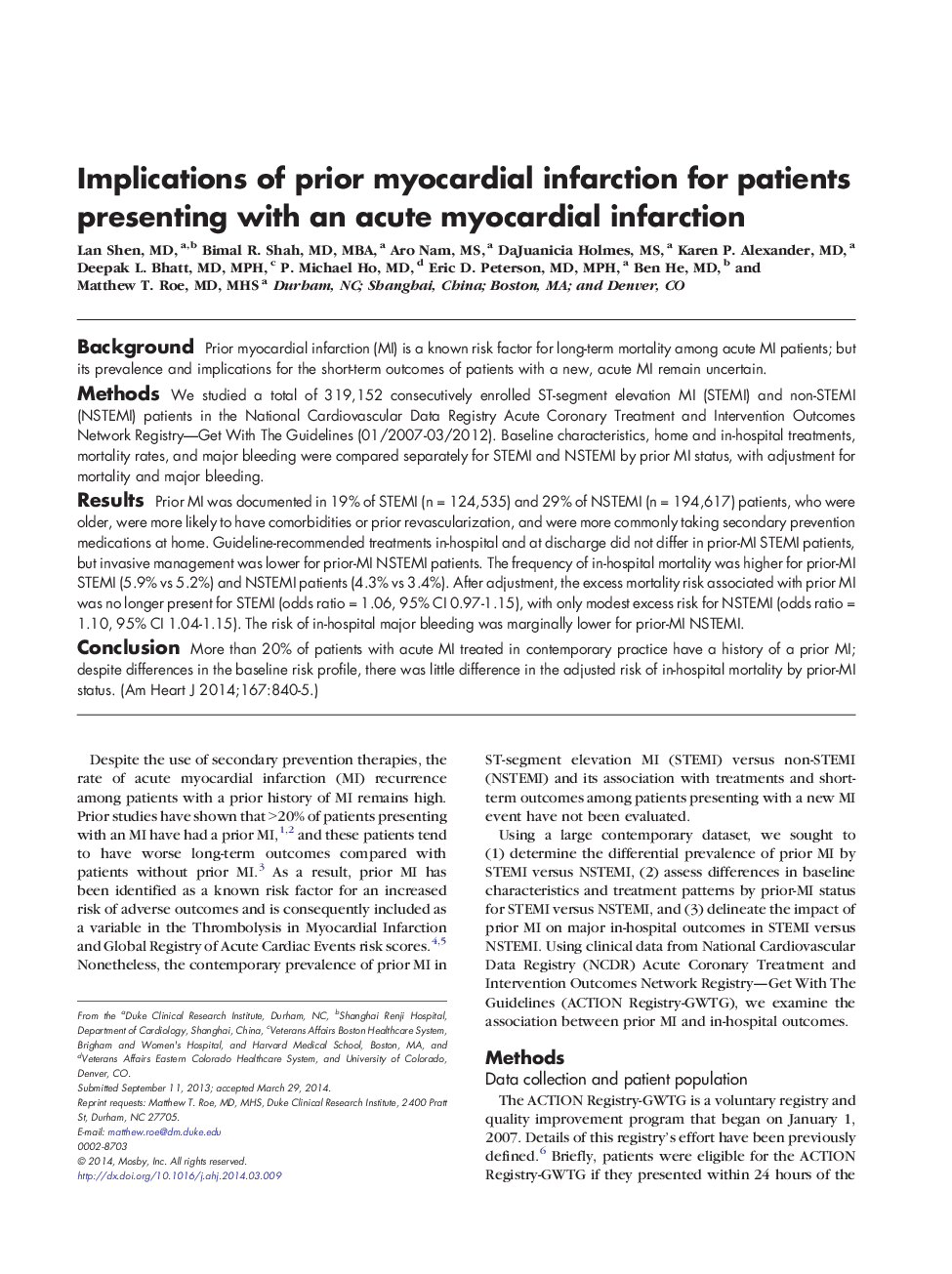| کد مقاله | کد نشریه | سال انتشار | مقاله انگلیسی | نسخه تمام متن |
|---|---|---|---|---|
| 5926952 | 1167659 | 2014 | 6 صفحه PDF | دانلود رایگان |
BackgroundPrior myocardial infarction (MI) is a known risk factor for long-term mortality among acute MI patients; but its prevalence and implications for the short-term outcomes of patients with a new, acute MI remain uncertain.MethodsWe studied a total of 319,152 consecutively enrolled ST-segment elevation MI (STEMI) and non-STEMI (NSTEMI) patients in the National Cardiovascular Data Registry Acute Coronary Treatment and Intervention Outcomes Network Registry-Get With The Guidelines (01/2007-03/2012). Baseline characteristics, home and in-hospital treatments, mortality rates, and major bleeding were compared separately for STEMI and NSTEMI by prior MI status, with adjustment for mortality and major bleeding.ResultsPrior MI was documented in 19% of STEMI (n = 124,535) and 29% of NSTEMI (n = 194,617) patients, who were older, were more likely to have comorbidities or prior revascularization, and were more commonly taking secondary prevention medications at home. Guideline-recommended treatments in-hospital and at discharge did not differ in prior-MI STEMI patients, but invasive management was lower for prior-MI NSTEMI patients. The frequency of in-hospital mortality was higher for prior-MI STEMI (5.9% vs 5.2%) and NSTEMI patients (4.3% vs 3.4%). After adjustment, the excess mortality risk associated with prior MI was no longer present for STEMI (odds ratio = 1.06, 95% CI 0.97-1.15), with only modest excess risk for NSTEMI (odds ratio = 1.10, 95% CI 1.04-1.15). The risk of in-hospital major bleeding was marginally lower for prior-MI NSTEMI.ConclusionMore than 20% of patients with acute MI treated in contemporary practice have a history of a prior MI; despite differences in the baseline risk profile, there was little difference in the adjusted risk of in-hospital mortality by prior-MI status.
Journal: American Heart Journal - Volume 167, Issue 6, June 2014, Pages 840-845
